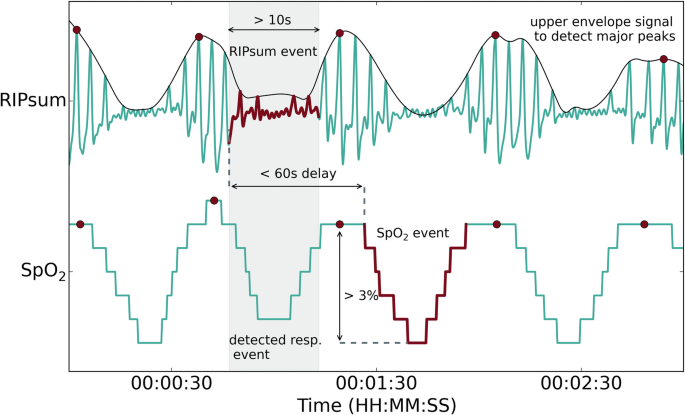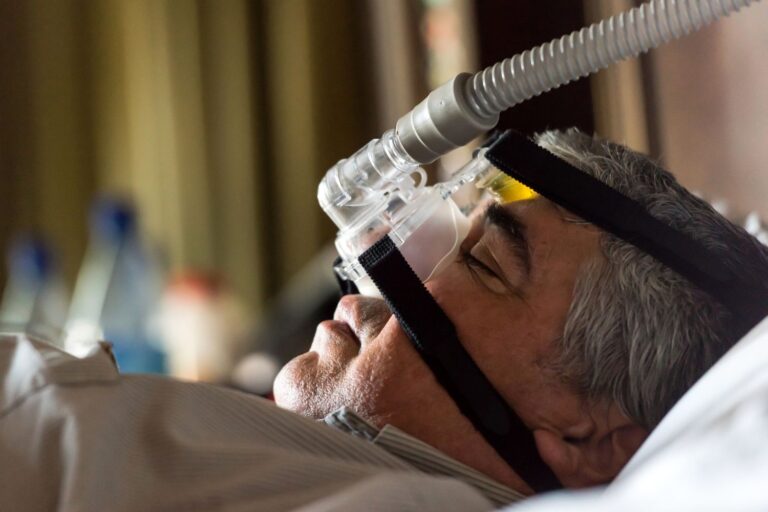Are you curious about what exactly constitutes an event on a CPAP machine? In the realm of sleep apnea therapy, understanding these events is crucial for effective treatment. CPAP (Continuous Positive Airway Pressure) machines are designed to provide a steady flow of air pressure to keep your airways open during sleep. But what do CPAP events entail? From apneas and hypopneas to mask leaks and snoring, each event plays a significant role in evaluating the success of your therapy. Join us as we delve into the intricacies of CPAP events, their impact on your treatment, and how you can optimize your experience with this indispensable device.
Introduction to CPAP Machines and Events
CPAP (Continuous Positive Airway Pressure) machines are commonly used to treat obstructive sleep apnea by delivering a steady flow of air pressure to keep the airways open during sleep. CPAP events, on the other hand, refer to specific occurrences detected by the machine that may impact the therapy effectiveness.
Understanding CPAP Events
CPAP machines monitor various parameters such as apneas, hypopneas, mask leaks, and flow limitations to track the user’s breathing patterns and therapy adherence.
These events are crucial as they help clinicians adjust the settings for optimal therapy and provide valuable insights into the user’s sleep quality.
Types of CPAP Events
The common types of CPAP events include obstructive apneas, central apneas, hypopneas, and leak events, each indicating different breathing irregularities during sleep.
- Obstructive Apneas: Result from physical blockages in the airway, causing pauses in breathing.
- Central Apneas: Occur when the brain fails to send signals to the muscles that control breathing.
- Hypopneas: Represent partially blocked airways leading to shallow breathing.
- Leak Events: Denote excessive air leakage from the mask, affecting pressure delivery.

Understanding CPAP Events
CPAP events are crucial data points recorded by CPAP machines to monitor and improve therapy effectiveness. These events provide valuable insights into a patient’s sleep patterns, breathing disturbances, and treatment response.
Types of CPAP Events
There are different types of CPAP events such as apneas, hypopneas, flow limitations, mask leaks, and snoring episodes.
Monitoring these events helps healthcare providers customize treatment plans to enhance patient outcomes.
Significance of CPAP Events
Understanding CPAP events assists in adjusting therapy settings, tracking progress, and identifying issues that may compromise treatment efficacy.
- Apneas: Complete cessation of airflow for at least 10 seconds.
- Hypopneas: Partial airflow reduction leading to oxygen desaturation.
- Flow Limitations: Partial obstructions in the airway causing breathing difficulties.

Types of Events on a CPAP Machine
When using a CPAP machine, various events can occur that may affect its functionality and your sleep therapy. Understanding these events is crucial for effective treatment. Here are some common types of events seen on a CPAP machine:
Air Leak Event
An air leak event happens when there is a significant amount of air leaking from the mask or tubing. This can lead to improper pressure delivery what is an event on a cpap machine.
Hypopnea Event
A hypopnea event occurs when there is a partial blockage of the airway, resulting in shallow breathing. It is essential to address this issue to maintain effective therapy.
Apnea Event
An apnea event is characterized by a complete pause in breathing during sleep. This can severely impact your oxygen levels and overall health, requiring prompt intervention.
Causes and Implications of CPAP Events
CPAP (Continuous Positive Airway Pressure) events can be caused by various factors leading to disruptions in therapy. One common cause is an ill-fitting mask, which can lead to air leaks, making the therapy less effective. Nasal congestion or respiratory infections can also contribute to CPAP events, as they obstruct the airway and impede proper airflow during sleep.
Mask Fit
An improperly fitted mask can cause air leaks, reducing the effectiveness of CPAP therapy. It is crucial to regularly check and adjust the mask to ensure a proper seal (year).
Ensuring the mask fits comfortably and securely can help minimize CPAP events (year).
Respiratory Infections
Respiratory infections such as colds or sinus issues can worsen CPAP events by causing congestion that hinders airflow (year).
- Regularly cleaning the CPAP equipment can help reduce the risk of infections (year).
- Consulting with a healthcare provider for proper treatment of respiratory conditions is essential to managing CPAP events effectively (year).
How to Identify CPAP Events
CPAP events are crucial indicators of the effectiveness of your therapy. One way to identify CPAP events is by accessing your machine’s data. For instance, monitoring software can provide detailed reports on events like apneas, hypopneas, mask leaks, and snoring episodes.
Accessing CPAP Machine Data
Most CPAP machines store data related to events that occur during therapy. By reviewing this data, you can gain insights into your sleep patterns and the efficacy of your treatment. Make sure to regularly check your machine’s data for any irregularities or persistent issues.
You can also use smartphone apps that sync with your CPAP machine to track events in real-time and receive notifications about potential disruptions.
Consulting with Your Healthcare Provider
If you are unsure about how to interpret the data from your CPAP machine or if you notice frequent events despite adhering to therapy, it is essential to consult with your healthcare provider. They can analyze the data and make necessary adjustments to improve your treatment outcomes.
- Regular check-ups: Schedule regular follow-up appointments with your healthcare provider to discuss your progress and address any concerns.
- Compliance monitoring: Healthcare providers can assess your CPAP compliance by analyzing the data from your machine to ensure optimal therapy adherence.
Managing and Addressing CPAP Events
CPAP events, such as apneas or hypopneas, can impact the effectiveness of your sleep therapy. It is crucial to monitor and address these events to ensure optimal treatment outcomes.
Understanding CPAP Events
CPAP events refer to interruptions in normal breathing patterns during sleep, often indicated by changes in airflow or pressure levels detected by the machine.
These events can disrupt your sleep quality and lead to daytime fatigue and other health issues if not managed effectively. Understanding these events is key to improving your CPAP therapy.
Managing CPAP Events
To manage CPAP events, it is essential to regularly review your CPAP data and compliance reports. Consulting with your healthcare provider for adjustments in pressure settings or mask fittings can help address underlying issues.
- Ensure proper mask fit
- Keep equipment clean
- Follow recommended sleep hygiene practices
Frequently Asked Questions
-
- What is a CPAP machine?
- A CPAP machine is a medical device used to treat sleep apnea by delivering a continuous flow of air to keep the airway open during sleep.
-
- What are CPAP events?
- CPAP events refer to specific occurrences detected by the CPAP machine while a user is sleeping, such as apneas, hypopneas, mask leaks, and flow limitations.
-
- How do CPAP machines detect events?
- CPAP machines use sensors to monitor a user’s breathing patterns and airflow, detecting changes that indicate events like apneas or hypopneas.
-
- Why are CPAP events important?
- Monitoring CPAP events is crucial in assessing the effectiveness of the therapy and the user’s sleep quality, helping healthcare providers adjust the settings for optimal treatment.
-
- How can I reduce CPAP events?
- Ensuring proper mask fit, maintaining equipment hygiene, following therapy adherence, and consulting with a healthcare provider for adjustments can help reduce CPAP events.
Final Thoughts: Understanding CPAP Events
After delving into the realm of CPAP machines and the significance of events, it becomes clear that these devices are crucial in managing sleep apnea and improving overall quality of sleep. Events on a CPAP machine, such as apneas, hypopneas, and leaks, serve as key indicators of how effectively the therapy is working to keep airways open and ensure proper breathing during sleep.
By recognizing and interpreting these events, users can adjust settings, seek medical advice, and optimize their CPAP therapy for better outcomes. Understanding what constitutes an event on a CPAP machine empowers individuals to take control of their sleep apnea treatment and achieve restful nights and enhanced well-being.
Remember, the journey to effective CPAP therapy may have its challenges, but with knowledge and support, better sleep and improved health are within reach!



